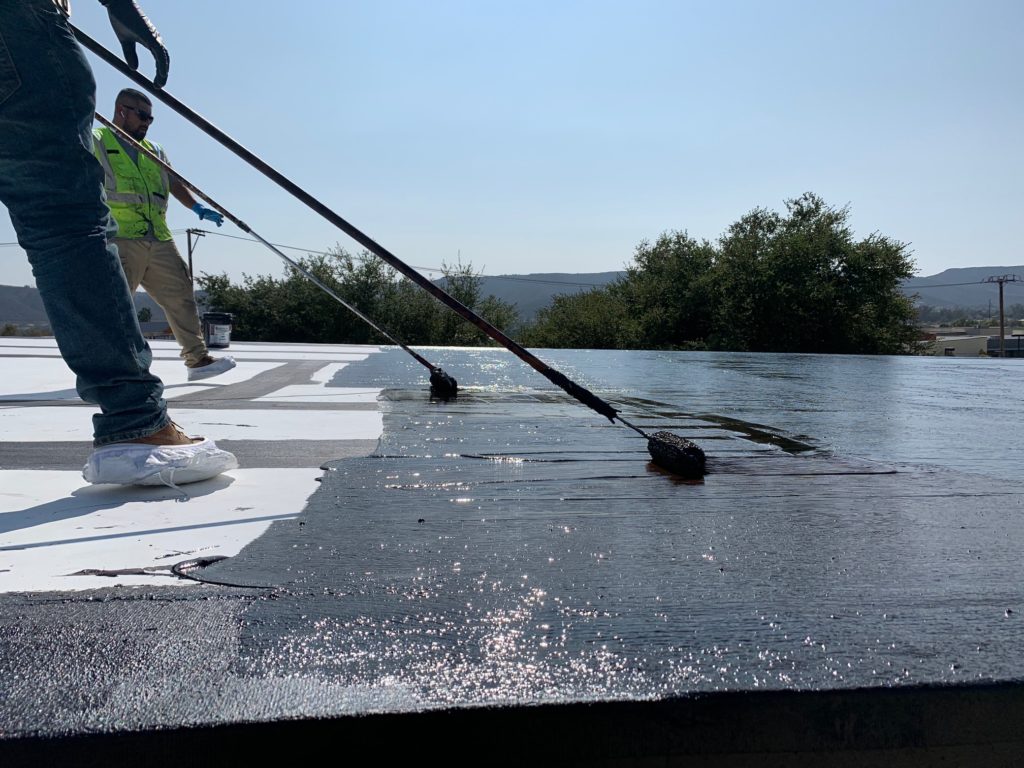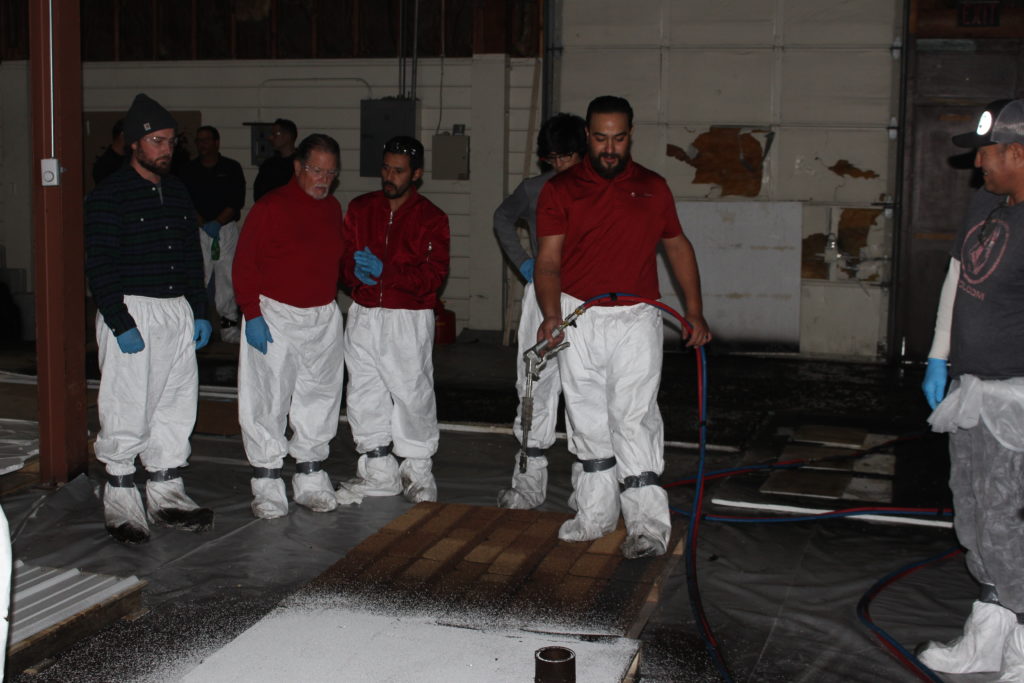Roll-Applying or Spray-Applying Your Roof Coating Systems? Which technique is better?
If you’re starting in the Commercial Roof Restoration business, this could be a confusing choice.
Both are useful application techniques, and each has its advantages.
However, there is always an on-going debate over which is the ideal method for applying commercial coatings.
The most significant benefit of spray-applying is that it’s much faster than roll-applying.
With that being said, you can cover more square feet per minute, meaning that you can focus on your next project sooner.
Roll-applying is slower, but it lays down a thicker surface on the roof, and no special equipment is needed.
In this article, you will find the most important things to consider to make the right decision.
Read on!
Aspects to Consider Before Spray-Applying Roof Coating Systems
If you are starting in the commercial roofing industry, we recommend checking the equipment suggested by your technical team.
You may need more than one commercial sprayer. Everything depends on the product that you’re using.
-
You need to purchase special commercial equipment.
Due to the System’s thickness and coverage rates, you may need sizable commercial airless equipment to spray the product efficiently.
Knowing the unique product features and characteristics will help you select a commercial sprayer large enough for every project in your way.
At Instacoat Premium Products, we also manufacture high-quality sprayer equipment to apply our “Neoprene Liquid Rubber Membrane.”
By using our “Neoprene Liquid Rubber Membrane,” you can fully seal, spray and waterproof all types of equipment on the roof.
-
Training and practice are required.
Setting up commercial airless spray equipment requires training, practice, and experience.
You can’t buy a commercial sprayer and apply the silicone coating on your first day; building those skills takes time and money.
Things such as system pressure, fluid viscosity, and spray distance are essential.
Whenever you buy our Spray Equipment, Instacoat Premium Products provides the training and application guidelines so you can take your projects to the next level.
Aspects to Consider Before Roll-Applying Roof Coating Systems
There is no doubt you need less technical labor and skills when you roll-applied a coating system.
Despite that, there are many other aspects to consider, such as cost, roofing preparation, and surface condition.

Roll-applying may be the best choice for you if you’re not too familiar or trained enough with spray equipment.
You may want to choose the roll-applying method if these conditions are met:
-
Your project is on a tight budget.
All roller items are inexpensive compared to the cleaning process and maintenance of commercial airless spray equipment.
You can coat the roofing system with a paint roller or a roller cover.
For example, this technique is chosen for minor jobs, perhaps a small building office or a mini-mall.
In both cases, roll-applying is perfect to avoid the cost of airless spray equipment, set up time, and required training.
-
Roof detailing and preparation.
There are uneven surfaces and seams where you want to get full coverage.
In that case, a manual application can have many benefits for small areas that require a little extra attention to detail for either aesthetics or waterproofing.
Despite this application method is more time consuming, roll-applying may be the best choice for you if you’re not too familiar or trained enough with spray equipment.
Conclusion
We can’t forget to mention that roll-applying is the best option when it’s windy in the project area.
The wind speed limit and commercial spray equipment can be a challenge, and some recommend roll-applying techniques when the wind is around 10 miles per hour.
As all experienced roofers know that both spray and roll applying have their pros and cons for your commercial roofing projects, and most contractors use both of them depending on the project site conditions.
The decision depends on the roofing experience you have and the project’s budget primarily, but it’s up to you.
Ensure you follow the guidelines recommended by your technical team.
Contact us!

